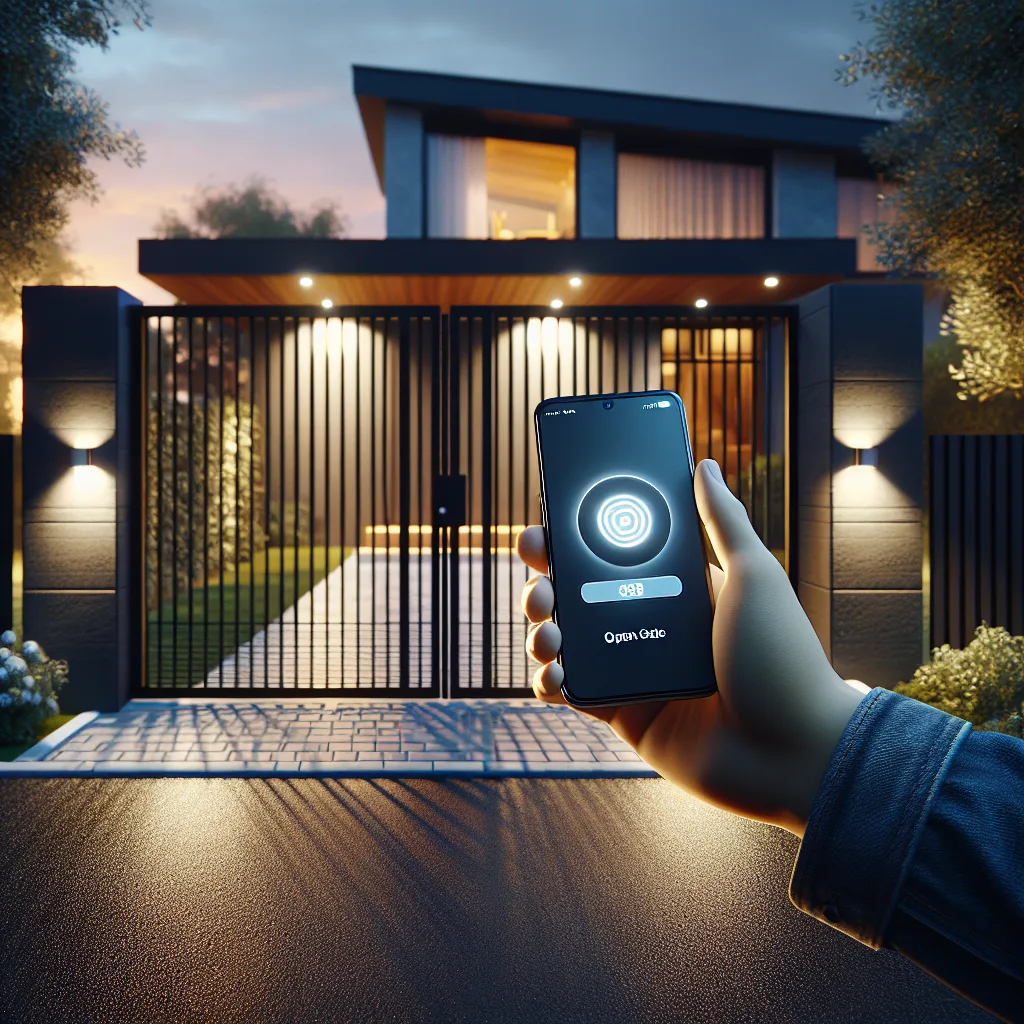Struggling to connect your new sliding gate to Wi-Fi or your car’s HomeLink system? Our guide explains how to make your electric gate smart.
So you got a new automatic sliding gate. Awesome. It’s a serious upgrade for your home, and for the first few days, you probably felt pretty cool clicking that little remote.
But then, the novelty wears off and the questions start.
Why do I have to use this clunky remote? Why can’t I just use my phone? And the biggest one of all: why in the world won’t my car’s built-in garage door opener button work with this brand-new gate?
If you’re asking these questions, you’re not alone. I’ve been there. You have this great piece of hardware, but it feels completely disconnected from the rest of your modern life. The good news is, you can absolutely fix this. It’s easier than you think.
First, Let’s Get Your Gate on Wi-Fi
Most automatic gates are pretty simple. The “brain” is a control board that’s designed to do one thing: open and close when it gets a signal from its own specific remote. It usually doesn’t come with Wi-Fi built right in.
But here’s the secret: that control board almost always has a set of simple terminals for a wired push-button, just like a doorbell. It’s there for installing a keypad or an intercom.
This is our way in.
We can add a small, inexpensive “smart relay” or “Wi-Fi module.” Think of it as a tiny, smart finger that you can control from your phone. You wire this module to the push-button terminals on your gate’s control board. When you tap a button in an app (like Smart Life, Tuya, or a brand-specific one), the module closes a circuit for a second—it metaphorically “pushes the button” for you.
And just like that, your gate is on Wi-Fi.
You can now open or close it from anywhere in the world. You can get notifications. You can even give access to family members or let a delivery driver in while you’re at your desk.
Which module should you get?
There are tons of them out there. Brands like Sonoff and Shelly make popular universal Wi-Fi relays that are perfect for this. Search for a “Wi-Fi gate opener” or “smart garage door opener” (they work the same way), and you’ll find plenty of options. Just make sure it’s compatible with your gate’s voltage and has “dry contact” or “relay” mode.
Okay, But What About My Car’s Button?
This is the one that frustrates everyone. You’d think a 2024 car could talk to a 2024 gate opener. But it’s often not the case.
The problem is that your car’s built-in buttons, usually part of the HomeLink system, aren’t universal remotes. They are learners. They are designed to learn the specific radio frequency and rolling code from your original remote.
Sometimes, the “language” your gate opener speaks is just too new, too old, or too obscure for HomeLink to learn. It’s like trying to teach Spanish to someone who only has a French-to-English dictionary. It just doesn’t work.
So, you can sit in your car pressing buttons for an hour, but if they aren’t compatible, they’ll never sync up.
The All-in-One Fix: The Bridge
This brings us to the real solution, the one that solves both the Wi-Fi and the car problem at the same time.
You don’t need two separate gadgets. What you need is a smart gate opener kit that comes with its own HomeLink-compatible remote.
Here’s how it works:
1. You buy a Wi-Fi module kit that includes both the smart relay and one or two of its own physical remotes.
2. You wire the smart relay to your gate’s control board, just like we talked about before. This gets your gate on your phone.
3. Then, you take the new remote that came with your kit and program your car’s HomeLink system to that.
Problem solved.
The Wi-Fi module acts as a bridge. Your car talks to the new remote (via HomeLink), which tells the Wi-Fi module to open the gate. And your phone talks to the Wi-Fi module directly. Everything works.
It’s a simple, elegant solution that connects all the dots. You get the convenience of opening the gate from your app, and the seamless experience of pulling up to your driveway and opening the gate with the button that’s already built into your car.
It’s the way it should have been from the start. It might take a little bit of research and a screwdriver to install, but the payoff in convenience is huge. You’ll never look at that old clunky remote again.
